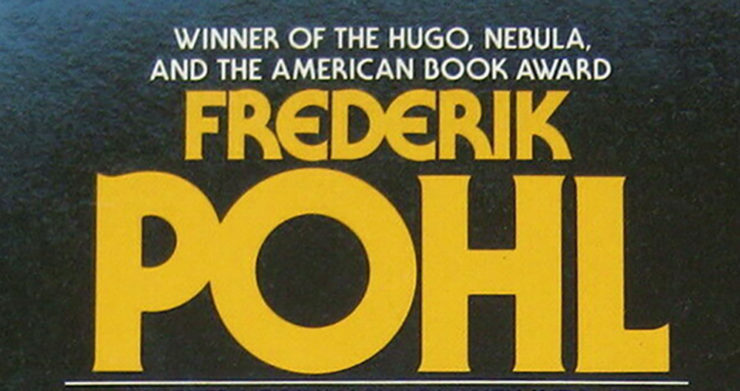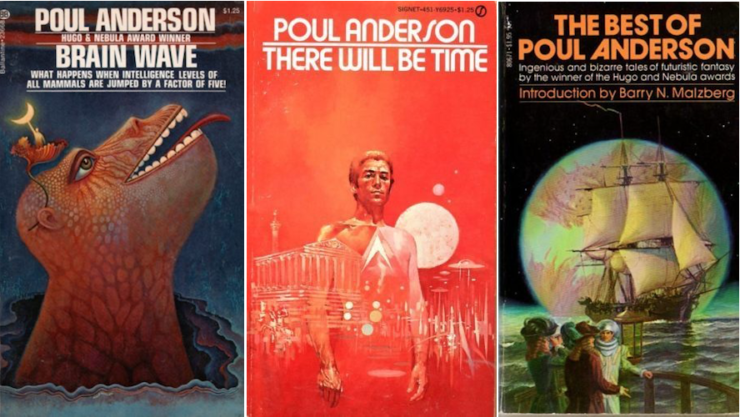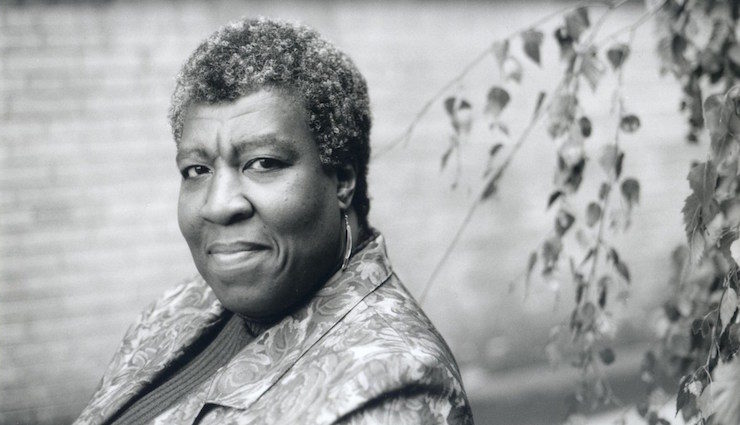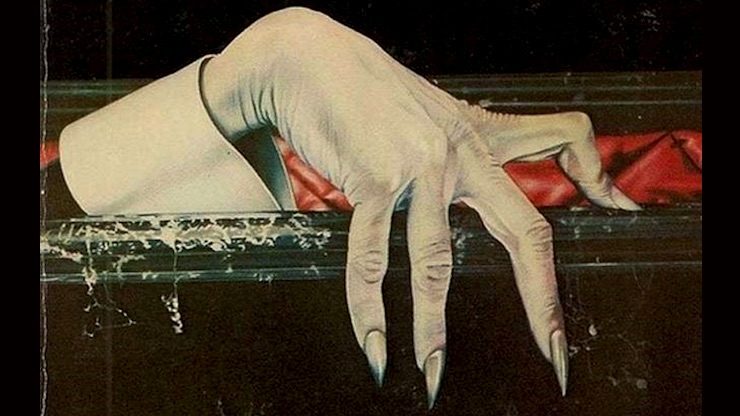Fantasy art existed long before his birth in 1928 and has certainly continued to flourish since his passing in 2010, but it’s safe to say that few illustrators have had such an influence and emotional impact on the field as Frank Frazetta.
Today, on what would have been his 88th birthday, I’d like to look back on Frazetta’s background and how such a unique person influenced fantasy art forever.
Encouraged by his grandmother and raised on a steady diet of Edgar Rice Burroughs’ Tarzan novels, adventure serials, and multiple viewings of the original King Kong film, Frazetta started drawing from an early age.
Enrolled for weekend classes at Michele Falanga’s one-room Brooklyn Academy of Fine Art at the age of 8 (his only formal training), he was eventually introduced to pulp/comics artist John Giunta and became his apprentice as a teenager. From there he went on to work for a variety of comics studios, eventually graduating from cleaning up other artist’s pages, erasing pencil lines and ruling borders, to drawing his own noteworthy stories and covers for Standard, DC, ME, and EC Comics.
Frazetta’s style was an amalgam of his many youthful influences: a dash of Milton Caniff, a dollop of Graham Ingels, a sprinkling of Al Capp (whom Frank worked for as a ghost on the “Li’l Abner” strip), and a huge scoop of Hal Foster all went into his stew. What emerged was something both exciting and unique. Roy Krenkel encouraged Frazetta to switch from ink and watercolor to oils and helped him secure his first jobs painting magazine and paperback covers (Creepy for Warren Publishing and a variety of Burroughs titles for Ace). A parody ad for Mad featuring a caricature of Ringo Starr (“Blecch Shampoo”) led to some lucrative movie poster jobs, but it was his paintings for the Conan series for Lancer Books that propelled him to the front ranks of fantasy artists. The mid-1960s through the mid-’70s were Frank’s prime years and he produced a small but compelling body of work that continues to resonate today. Profiled in Esquire magazine, featured on the cover of American Artist, the subject of a series of bestselling collections from Peacock Press, and the coproducer of an animated film inspired by his art (Fire and Ice, 1983), Frank’s successes opened the door for other fantasy illustrators following in his wake.
The contradiction is that Frazetta never really did think like an artist: to him it was simply something he could do rather easily and earn a nice paycheck in the process. As an illustrator his body of work is relatively small when compared to his contemporaries, perhaps 300 or so paintings over the course of a 50+ year career. Frank was much more content playing baseball or golf or chasing women than he was sitting at the easel. The mantle of “painter” or “fine artist” was something others wrapped around his shoulders years after he was largely retired, way-laid by a host of health problems that began in the early 1980s. Though he enjoyed the compliments and played along with the conversations, art wasn’t a “calling” to Frank as much as it was a “job.” One to be done quickly to put money in the bank so he could have the time to do the things he was really interested in doing—and painting wasn’t one of them.
Maybe it’s that attitude—a combination of short-term intense focus and swagger followed by casual, almost cavalier disinterest—that helps explain Frazetta’s importance and why his art remains so popular (and, in some cases, commands over a million dollars when sold). It’s true that he had a formula and rarely deviated from a single plane perspective with triangular composition in his paintings—and, if analyzed academically, there are fair criticisms that can made about proportion, anatomy, and finish. But it is also true that there is a heightened sense of drama that is cathartic, a brash enthusiasm and honesty that is affecting, inimitable, and ultimately unforgettable. Perhaps Ray Bradbury said it best when describing the mystique that grew up around him: “Young boys would like to look like his heroes or, failing that, draw and shape dreams as well as Frazetta does.”
That desire doesn’t really diminish with age.
Originally published February 9, 2013 on Tor.com.















A very interesting and informative article. It is hard to capture what makes a painter special in a few words, but I think you did quite well.
Arnie, your words are poignant and spot on. Many of us grew up surrounded by Frank’s art, like a cultural and biological indoctrination. He was there, guiding us and influencing our dreams, when we read the Sunday funnies and marveled at MoonBeam McSwine and Daisy Mae, or when horrified in wonderful ways by the latest Creepy cover, and beckoned onward to new adventures reading ERB or REH because of his paintings’ siren songs! Ray Bradbury was correct! We all wanted to immerse ourselves in Frank’s magic, to live in the worlds of our dreams which he projected on canvas and paper, to be the Hero Adventurer, no matter what the genre or subject, evolving into pale reflections of the Warrior Artist who was, and is, Frank Frazetta!
He was certainly something special, and it isn’t easy to define why. Or at least it isn’t easy to narrow down the ‘why’ to something that doesn’t approach book-length praise. 85. He could still be alive today, sadly. It is a shame the more recent Frazetta news involves the craziness of his family.
Very nice article Mr. Fenner. For those of you who haven’t read them I would highly recommend Arnie and Cathie Fenner’s three volume set of books about Frank Frazetta. They are combination art books and biographies that are of the highest quality. Well worth having as part of your collection.
Yeah, I don’t know about the overstatement on this. Frank was very proud of his work. But more than this, he worked on plenty of private art too, that the public rarely got to see – comics to his friends a family, little portraits and cards. Art to him was a form of communication with other people, not just a job.
In the early 80s, there was a place near the University of Texas-Austin called Conan’s Pizza, a half-timbered reproduction of the tavern from the movie & decorated entirely with Frazetta’s paintings and painted mirrors. I don’t remember the pizza too well, but the ambiance was terrific.
I still remember the first time I really became aware of Frazetta. I was probably 10, and in the back of a Comic magazine, there was a catalog type add, where you could mail order some of his posters. I remember The Silver Warrior especially standing out. His work was so primal and had such a feeling of a misty shrouded begotten age, even his sci-fi stuff, like the TV Guide Battlestar Gallactica never seemed futuristic.
Frazetta, did influence me artistically, -what small talent I had- but what he really inspired in me, was my imagination. Frazetta’s stuff, got me to read ACE Conan series, which my editions also sported Boris covers on some, which lead to other sword &sorcery, and developed a life-long passion for sci-fi/fantasy, which is one my greatest pleasures. And I’m so greatful for that..
side note- Someday, if I ever have enough $, I hope to do a Frazetta back-piece tattoo. I’ve been leaving my back uninked for that sole purpose.
GREAT article, terrible likeness of Frank. First bad one I’ve seen by Johnson.
I would suggest that Alex Raymond should be added to the list of influences (perhaps even more so than Foster).
Also, it is worth a mention is his time at EC comics inking Al Williamson and assisted by Roy Krenkel.